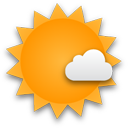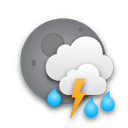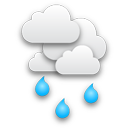Sunny skies will turn rather unsettled on Thursday as multiple disturbances move across Southern Manitoba.
Wednesday
Wednesday 28°CMainly sunny. Chance of showers near the U.S. border.
28°CMainly sunny. Chance of showers near the U.S. border.
Wednesday Night 15°CIncreasing cloud. Showers beginning overnight with the risk of a thunderstorm.
15°CIncreasing cloud. Showers beginning overnight with the risk of a thunderstorm.
We’ll see mainly sunny skies today as we spend a short amount of time in the stable air behind the cold front that passed through yesterday. That front will be sitting south of the border in North Dakota, however a very strong upper-level jet will be in place through Northern North Dakota near the Canadian border. There will be a slight chance of showers near the border thanks to the extra lift supplied by this feature.
We’ll see increasing cloudiness tonight as the upper-level jet starts pushing back northwards and the aforementioned cold front becomes a warm front and start pushing northwards again. Showers – with the risk of a thunderstorm – will develop over SW Manitoba overnight and advect eastwards into the Red River Valley before morning. No severe weather is expected.
Thursday
Thursday 24°CShowers ending midday then cloudy with a few sunny breaks and a continued chance of showers.
24°CShowers ending midday then cloudy with a few sunny breaks and a continued chance of showers.
Thursday Night 15°CShowers with the risk of a thunderstorm overnight.
15°CShowers with the risk of a thunderstorm overnight.
Thursday morning will start off rainy with the risk of a thunderstorm. Around 10–20mm of rain is possible however any higher amounts will likely be localized to any heavier patches of rain that develop. Things should taper off by midday leaving us with cloudy skies and perhaps a sunny break or two, but a chance of showers will continue through the afternoon.
Thursday night will start off cloudy then rain will push in by the late evening period as another cold front sweeps southwards from the central Prairies. Unfortunately, this area of rain will likely start off as thunderstorms over SW Manitoba.

NAM sounding valid on Thursday evening near Brandon, Manitoba.
Quickly looking at some of the convective elements in place:
- MLCAPE values forecast to be in excess of 2000J/kg
- 60kt 500mb jet will begin work it’s way into the region with the left exit of the jet poking into the Melita & Virden regions early in the evening.
- A frontal boundary will be very close to the area providing convergence that can act as a trigger for storm initiation.
- Falling heights through the upper atmosphere should help prime things for both initiation convection and to sustain anything that does manage to get going.
Low-level shear will not be favourable for the development of tornadoes, but the strong straight-line shear combined with ample moisture and relative low freezing levels will make large hail and torrential downpours a serious concern. Given the shear profile and the strength of the winds aloft, there may be a slight chance that these storms will develop strong straight-line winds. The main threat for severe weather will be over southwest and western Manitoba; at this point it looks like points from Virden to Minnedosa east to the lake then down along the shore-line to Portage face the biggest threat for severe weather, although not much would have to change to include Melita & Pilot Mound regions in there too. We’ll take a look at things a little later today and update this post with a severe thunderstorm outlook graphic if it seems applicable.
The thunderstorms will grow into an area of rain as they travel eastwards towards the Red River Valley. Here in Winnipeg we’ll still see the threat of a thunderstorm overnight, but it should mainly be rain – potentially heavy at times – amounting to about 5–10mm. If we see a thunderstorm than naturally the accumulations could be significantly more than that. The storms and rain should move out of the RRV into Northwestern Ontario overnight.
Friday
Friday 24°C
24°C /
15°CMainly sunny.
Mainly sunny skies will dominate on Friday as we move into a cooler, stable air mass in behind Thursday’s system. We’ll see the cooler weather persist for another day or so before hot weather begins working it’s way back into the area with temperatures looking to climb back towards 30°C on Sunday. The weekend looks gorgeous so get out there and enjoy it!


